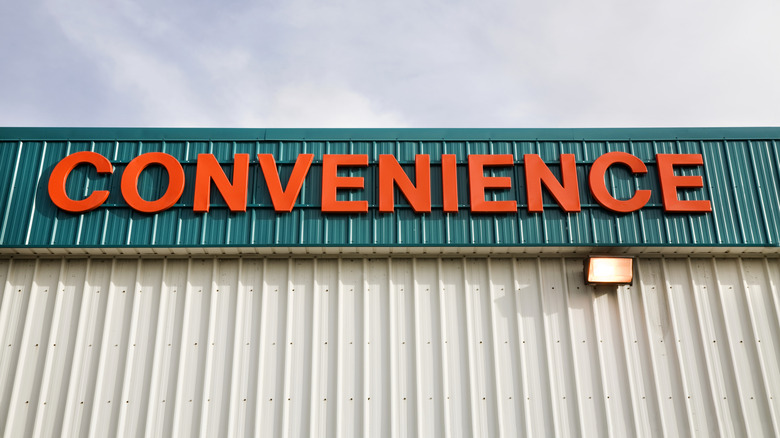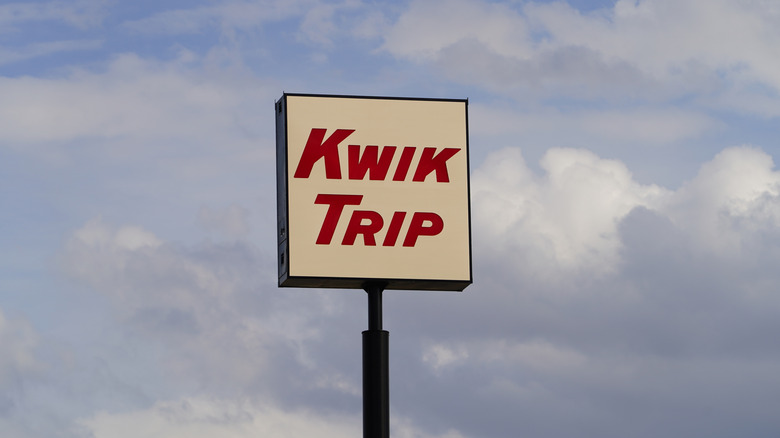The Midwestern Convenience Chain That Is Closing All Stores After Going Bankrupt
Lately, chain stores are becoming a dying breed. Whether large or small, recent history has seen many beloved retail chains filing for bankruptcy. While many of these major retailers shut down hundreds of stores over time in an attempt to stem financial losses during recovery, others suddenly close hundreds of stores overnight. Even small convenience stores tucked into gas stations aren't safe from financial woes taking a big (and fatal) bite out of business.
Mega Co-op – also known as Mega! Co-op, Mega Consumers Cooperative, Travel Stop, and Holiday Stationstores – is yet one more brand to add to the chain store mass grave. Mega Co-op convenience stores, or "c-stores," had served the Eau Claire, Wisconsin area in some way for decades. As of March 14, 2025, the Wisconsin-based chain of fuel station convenience stores has closed all of its remaining locations.
The closures of the roughly 90-year-old chain's 31 stores comes only a handful of years after the chain filed for Chapter 11 bankruptcy in September 2023, and less than one year after Mega Co-op exited bankruptcy in June 2024. After hopeful preventative measures, rebranding, and restructuring — it's clear the brand's rebirth and reprieve was short-lived. The closure of Mega Co-op is a clear reminder that financial challenges for retail outlets can include threats from both within and without — and both tend to keep a lead foot on the gas.
Mega Co-op's post-bankruptcy plan
In Mega Co-op's 2023 bankruptcy filing paperwork, the company — and its related management companies — pinned the future of the company heavily on closing 13 "draining" stores that were deemed underperformers. The company's plan was to instead focus on sustaining the chain's remaining 18 convenience stores. However, it's worth noting that their bankruptcy paperwork included that the company was beholden to between 200 and 999 creditors. Also, as Mega Co-op exited bankruptcy in 2024, the company split from its Holiday franchise stores as a way to further streamline. In a press release at the time, the company stated its bankruptcy process had "diligently addressed business concerns, negotiated supply agreements, and defined a sustainable business model propelling them into the future." That future was meant to include things like a "community pump" program, which would donate two cents spent on every gallon of gas to a local school or nonprofit.
However, increased fuel prices and ongoing restructuring struggles lead to Mega Co-op's demise instead. In a closure-related press release, per Eau Claire's WQOW, Mega Co-op's CEO Mike Buck cited cashflow issues rooted in reduced fuel margins — the final blow in a year full of financial challenges. While factors like low foot traffic and consumer spending pullbacks are often blamed for company bankruptcy filings and closures, it's worth considering how mismanagement and restructuring problems can ensure a company's downfall.
The roots of Mega Co-op's demise
Even in the most egregious cases of private equity driving otherwise beloved brands into decline (like the story behind the closure of Joann Fabrics and even what happened to Toys R Us after filing for bankruptcy), press releases around chain closures tend to evoke the same common challenges — from inflation to the cost of operations. However, these widespread issues aren't usually the only threads in a failing chain's story.
While citing high fuel prices may seem sensible to explain Mega Co-op's closure, Eau Claire area locals have a different take. Reddit commenters with first-hand knowledge have noted that the much-larger Kwik Trip — a convenience and fuel chain that concentrates most of its 500-plus stores in Wisconsin alone — largely outpaced Mega Co-op. Commenters also highlighted that Mega Co-op stores were not in the best of shape, which could have been a function of the company spreading itself too thin with expansions and business dealings beyond its means. While Mega Co-op was, in part, run as a traditional cooperative — with shares once held by over 20,000 members – the company was also co-run by two LLCs and one management firm, per the chain's 2023 bankruptcy filing. Despite the chain expanding beyond it's original means of a grocery co-op, it ultimately played a more ruthless business game than it was ever built to handle.


